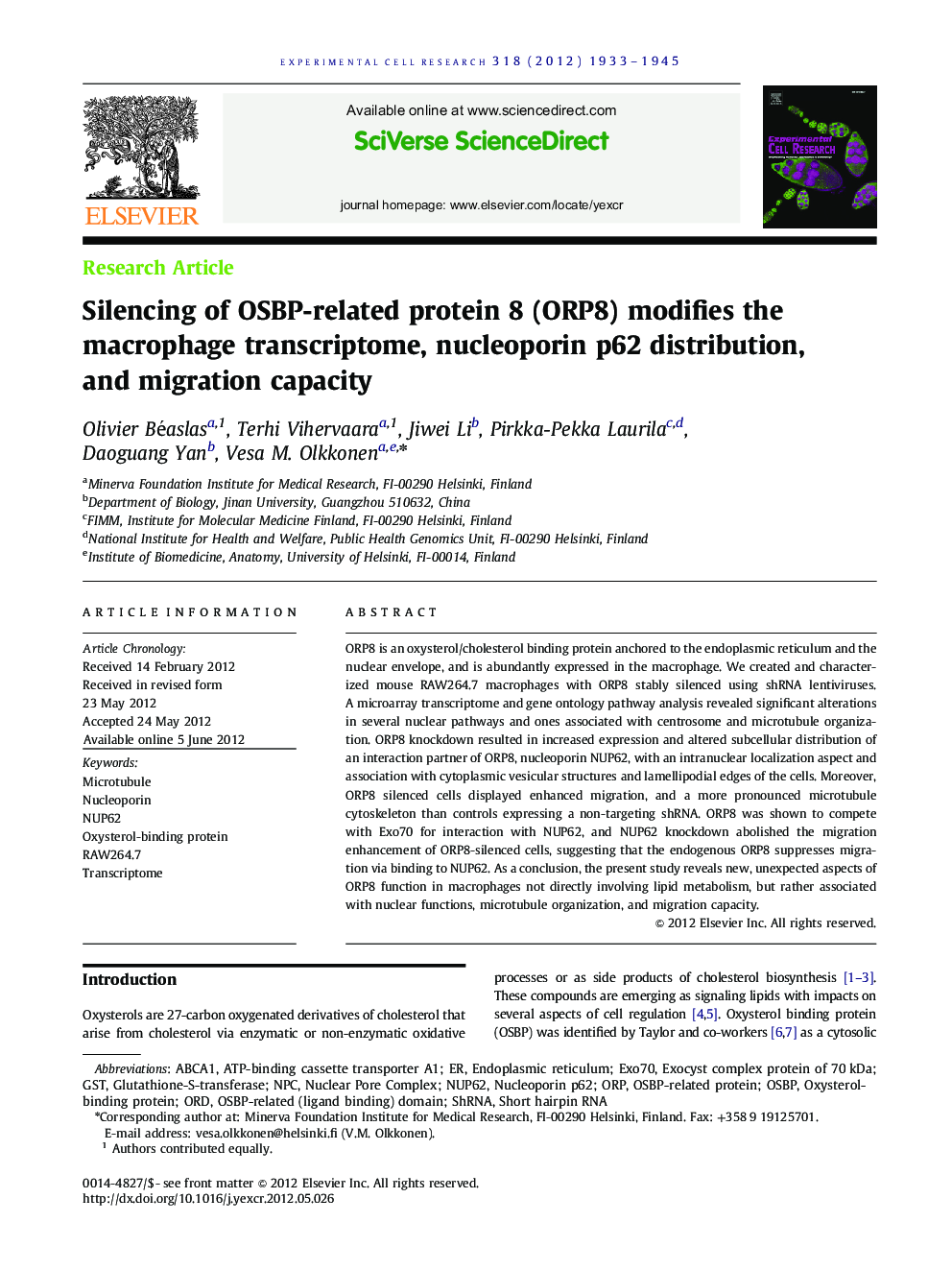| Article ID | Journal | Published Year | Pages | File Type |
|---|---|---|---|---|
| 2130535 | Experimental Cell Research | 2012 | 13 Pages |
ORP8 is an oxysterol/cholesterol binding protein anchored to the endoplasmic reticulum and the nuclear envelope, and is abundantly expressed in the macrophage. We created and characterized mouse RAW264.7 macrophages with ORP8 stably silenced using shRNA lentiviruses. A microarray transcriptome and gene ontology pathway analysis revealed significant alterations in several nuclear pathways and ones associated with centrosome and microtubule organization. ORP8 knockdown resulted in increased expression and altered subcellular distribution of an interaction partner of ORP8, nucleoporin NUP62, with an intranuclear localization aspect and association with cytoplasmic vesicular structures and lamellipodial edges of the cells. Moreover, ORP8 silenced cells displayed enhanced migration, and a more pronounced microtubule cytoskeleton than controls expressing a non-targeting shRNA. ORP8 was shown to compete with Exo70 for interaction with NUP62, and NUP62 knockdown abolished the migration enhancement of ORP8-silenced cells, suggesting that the endogenous ORP8 suppresses migration via binding to NUP62. As a conclusion, the present study reveals new, unexpected aspects of ORP8 function in macrophages not directly involving lipid metabolism, but rather associated with nuclear functions, microtubule organization, and migration capacity.
► The phenotype of Raw264.7 macrophage with ORP8 silenced is characterized. ► ORP8 silencing alters mRNA levels of nuclear and microtubule/centrosome pathways. ► ORP8 silencing results in increased expression and altered distribution of NUP62. ► ORP8 silenced macrophages show enhanced migration and altered microtubule cytoskeleton. ► ORP8 competes in vitro with Exo70 for binding to NUP62.
